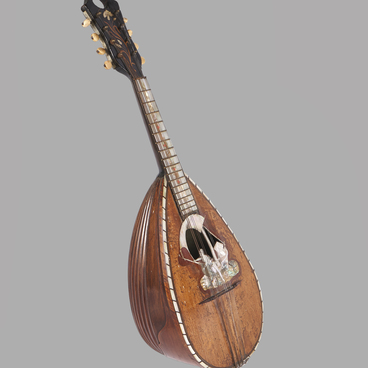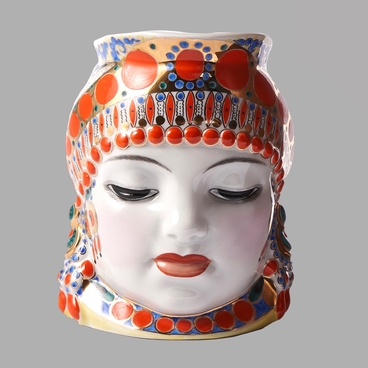The kerosene lamp with a 10-line burner and a blue glass body is a type of lighting device that uses kerosene as a fuel.
Such lamps were widely used from the second half of the 19th century — both in villages and cities. Kerosene lamps had replaced oiled ones, but their design was similar.
An antique kerosene lamp consisted of a bowl, a burner, a glass chimney around the wick, a protective metal frame and an adjustment knob — the mechanism that regulated the size of the flame.
The size of the wick was the main characteristic of any kerosene lamp. It was expressed in lines — an obsolete unit of measure. The kerosene lamp from the museum’s collection has a wick that is ten lines wide, so this is a ten-line kerosene lamp. The standard wicks could measure three, five, seven, ten, fifteen and twenty lines (one inch was divided into 12 “lines”, so one line was equal to about 2 mm).
The burner may have been made abroad and the bowl — in Russia. Both Russian and foreign artisans traditionally left a maker’s mark with the manufacturer’s name and brand on the adjustment knob. As for the glass containers forming the basis of the lamp, it is difficult to determine their origin due to the lack of identification marks.
This lamp could have been made in Russia, for example, at the Bolotin factory, which specialized in the production of colored glass products. Founded as a chemical factory, it has switched to the production of colored glassware in 1873. The factory produced table lamps on high pedestals, decorated with enamels, gold and paints.
Many Russian glass factories produced glass containers and lampshades. Since the 1880s, the Klyuchinsky Crystal Factory, the Gusevskaya, Urshelskaya and Dyatkovskaya crystal factories, the Vokovsky and Konevsky glass factories have specialized in the production of parts for kerosene lamps. Despite the development of electric lighting, people continued using kerosene lamps for decorating their homes for a long time.
Such lamps were widely used from the second half of the 19th century — both in villages and cities. Kerosene lamps had replaced oiled ones, but their design was similar.
An antique kerosene lamp consisted of a bowl, a burner, a glass chimney around the wick, a protective metal frame and an adjustment knob — the mechanism that regulated the size of the flame.
The size of the wick was the main characteristic of any kerosene lamp. It was expressed in lines — an obsolete unit of measure. The kerosene lamp from the museum’s collection has a wick that is ten lines wide, so this is a ten-line kerosene lamp. The standard wicks could measure three, five, seven, ten, fifteen and twenty lines (one inch was divided into 12 “lines”, so one line was equal to about 2 mm).
The burner may have been made abroad and the bowl — in Russia. Both Russian and foreign artisans traditionally left a maker’s mark with the manufacturer’s name and brand on the adjustment knob. As for the glass containers forming the basis of the lamp, it is difficult to determine their origin due to the lack of identification marks.
This lamp could have been made in Russia, for example, at the Bolotin factory, which specialized in the production of colored glass products. Founded as a chemical factory, it has switched to the production of colored glassware in 1873. The factory produced table lamps on high pedestals, decorated with enamels, gold and paints.
Many Russian glass factories produced glass containers and lampshades. Since the 1880s, the Klyuchinsky Crystal Factory, the Gusevskaya, Urshelskaya and Dyatkovskaya crystal factories, the Vokovsky and Konevsky glass factories have specialized in the production of parts for kerosene lamps. Despite the development of electric lighting, people continued using kerosene lamps for decorating their homes for a long time.


